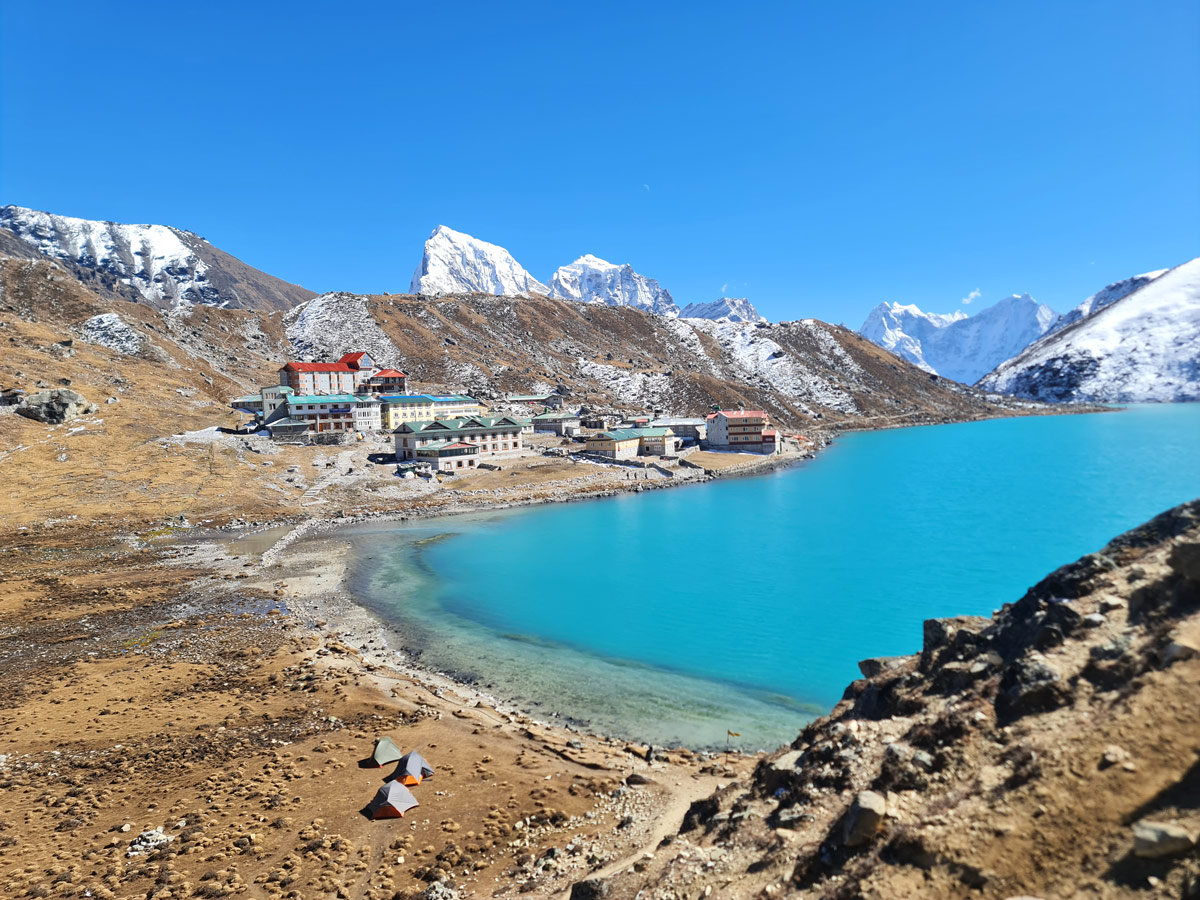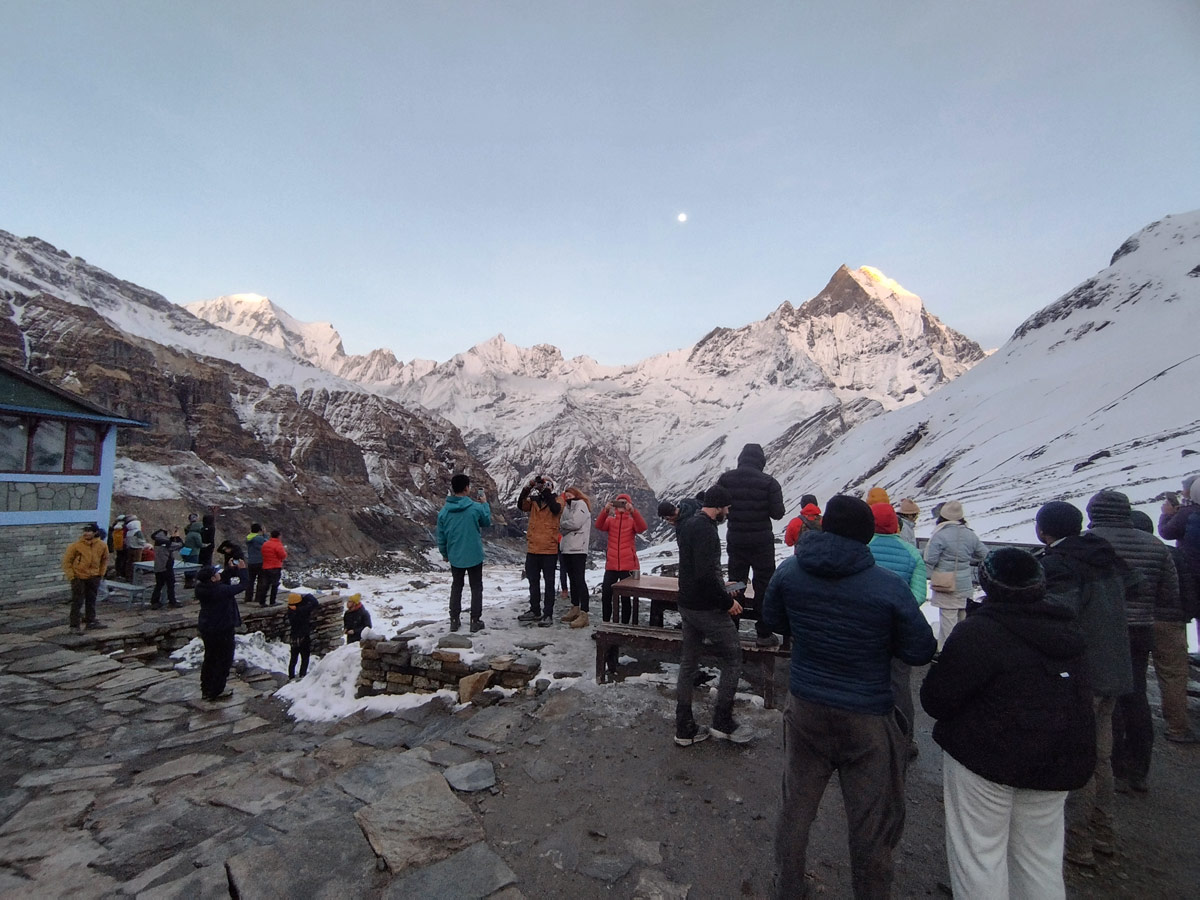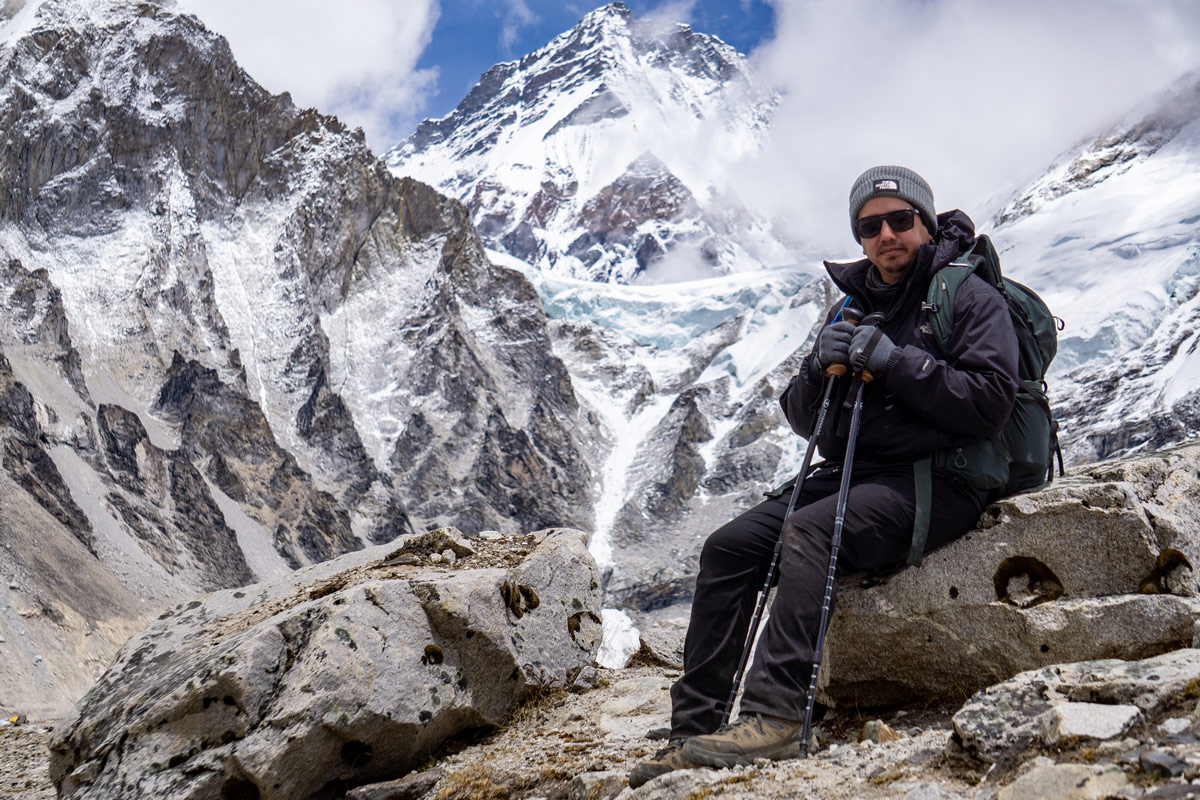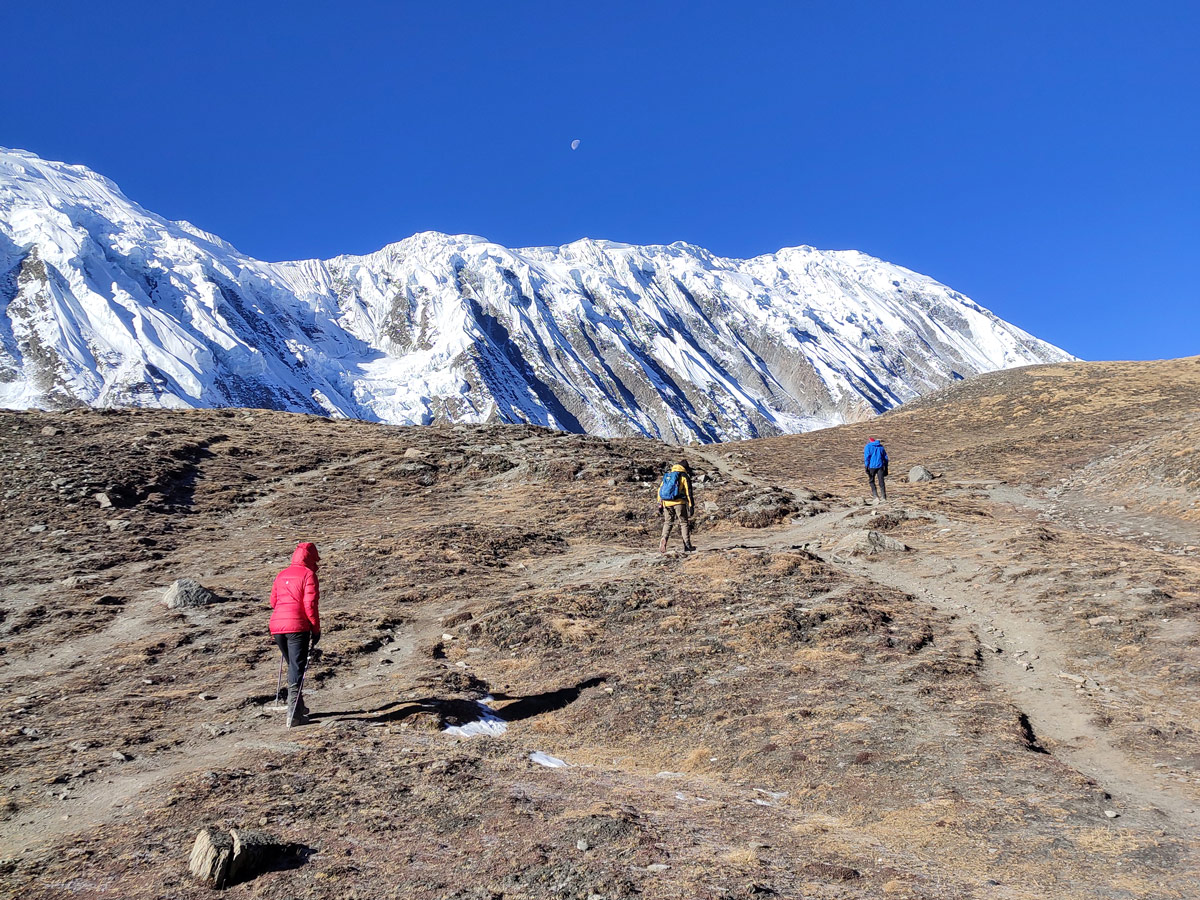A paradise for adventure enthusiasts and nature lovers, Nepal offers some of the most serene and thrilling activities to satiate the adrenaline rush of tourists, and trekking is one of them.
With the variety of trekking destinations and countless trekking trails, Nepal is a dreamland for trekking enthusiasts. Among some of its most breathtaking treks are the Gokyo Lakes Trek and Tilicho Lake Trek.
Both of these high-altitude lake treks stand out as iconic trekking trails in their own with breathtaking mountain views, challenging hikes, and the opportunity to explore unique high-altitude lakes.
However, the main question is how do you decide between these two treks given the unique offerings that both of them have? Worry not, as this blog is your ultimate guide for making the correct choice.
In this, we have compared the different aspects of Gokyo vs Tilicho Lake Trek.
Quick Overview Gokyo vs Tilicho Lake Trek
For a better understanding, below is a table which compares some of the key aspects of both these lake treks and allows you to make an informed choice based on your preferences:
| Aspect | Gokyo Lakes Trek | Tilicho Lake Trek |
| Location | Everest Region, Sagarmatha National Park | Annapurna Region, Annapurna Conservation Area |
| Key Highlights | Gokyo Lakes, Gokyo Ri (view of Everest), Ngozumpa Glacier | Tilicho Lake (one of the highest lakes in the world), panoramic views of Annapurna |
| Duration | 12-14 days | 15-18 days (often part of the Annapurna Circuit) |
| Maximum Elevation | 5,360m (Gokyo Ri) | 4,920m (Tilicho Lake), 5,416m (Thorong La if on Annapurna Circuit) |
| Difficulty Level | Moderate to challenging | Challenging due to altitude and remote trails |
| Starting Point | Lukla (via flight from Kathmandu) | Besisahar or Dharapani (drive from Kathmandu) |
| Best Seasons | Spring (March-May) and Autumn (Sept-Nov) | Spring (March-May) and Autumn (Sept-Nov) |
| Cultural Highlights | Sherpa culture, Buddhist monasteries, Namche Bazaar | Gurung, Thakali, Tibetan-influenced communities |
| Accommodation | Teahouses along the route, limited options in Gokyo | Teahouses, more basic near Tilicho Lake |
| Accessibility | Requires flight to Lukla (weather-dependent) | Accessible by road with flexible transport options |
| Wildlife & Flora | Himalayan Thars, musk deer, alpine flora | Blue sheep, rhododendron forests, yaks |
| Estimated Budget | Higher (due to flight costs and Everest region prices) | Moderate (transportation costs lower but variable) |
| Permits | Sagarmatha National Park permit, Khumbu Pasang Sherpa National Park permit | Trekker’s Information Management System (TIMS), Annapurna Conservation Area Project (ACAP) |
| Photography Spots | Reflective glacial lakes, Everest views, Ngozumpa Glacier | Surreal high-altitude lake, expansive barren landscapes |
| Environmental Concerns | Rising foot traffic impacting lake ecosystems | Conservation challenges around Tilicho and Annapurna |
| Suitable For | Trekkers seeking Everest views and alpine lakes | Trekkers interested in high-altitude lakes and the Annapurna region |
Gokyo Lakes Trek
Located in the Everest region, Gokyo Lakes Trek offers an opportunity to explore a series of high-altitude lakes including Longpanga Tsho, Taujung Tsho, Gokyo Tsho, Thonak Tsho, and Ngozumpa Tsho.
It also takes you to some of the unique viewpoints of the Everest region like Gokyo Ri from where you can get stunning views of Mt. Everest, Ngozumpa glacier, and more.
The Gokyo Lakes Trek is covered over a span of 12 to 14 days and is moderate to challenging depending on your prior trekking experience as well as your fitness level.
Tilicho Lake Trek
Another scenic lake trek of Nepal, the Tilicho Lake Trek takes you to the inner parts of the Annapurna Conservation Area and it takes you to one of the highest lakes of the world- the Tilicho Lake.
It is a comparatively more challenging trek which is usually done along with the Annapurna Circuit Trek. This trek is completed within 15 to 18 days and is more challenging and demands solid physical fitness as it takes you to higher altitude.
Scenic Beauty and Highlights
When it comes to scenic beauty, both the Gokyo Lakes Trek and Tilicho Lake Trek have their own highlights. The Gokyo Lakes Trek boasts a stunning mix of six oligotrophic lakes.
As you stand between these deep blue and green lakes, you can see the high-altitude mountain peaks being reflected in the waters of these lakes which makes up for a stunning photography opportunity.
From Gokyo Ri (5,360 meters), you can get some of the most stunning views of Mount Everest, Lhotse, Makalu, as well as the Ngozumpa Glacier which is one of the longest glaciers in the world.
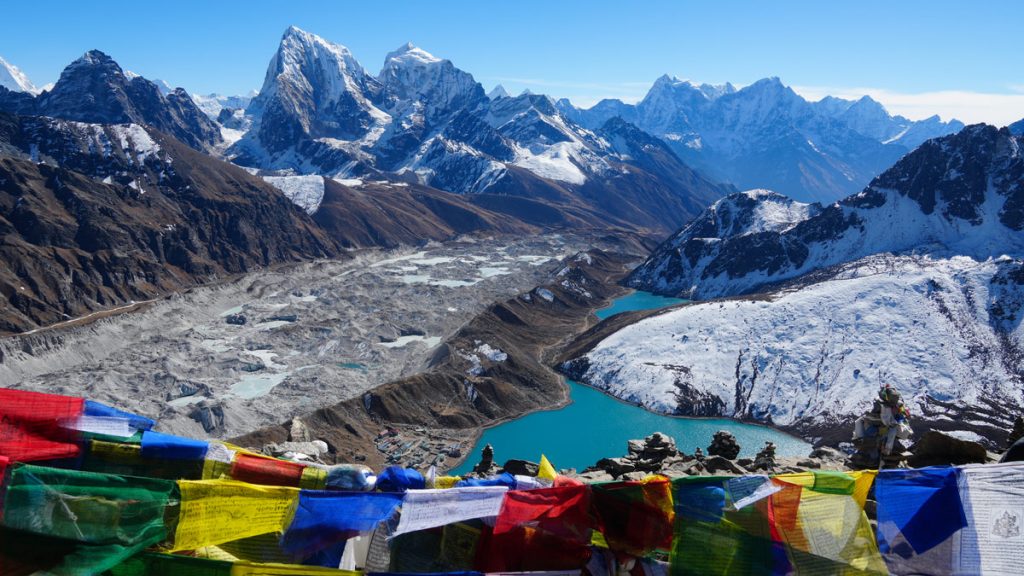
Himalayan Thars, musk deer, and the colorful Danphe (Nepal’s national bird) are common sights during the Gokyo Lakes Trek. The landscape includes dense pine and rhododendron forests that transition to glacial zones.
On the other hand, the Tilicho Lake Trek offers spectacular reflections of the rugged Annapurna range on the turquoise water of one of the highest lakes in the world- Tilicho Lake (4,920 m).
On this trek, you will be surrounded with snowcapped peaks, desolate landscapes, lush forests, barren alpine areas, high altitude deserts, and tranquility all around.
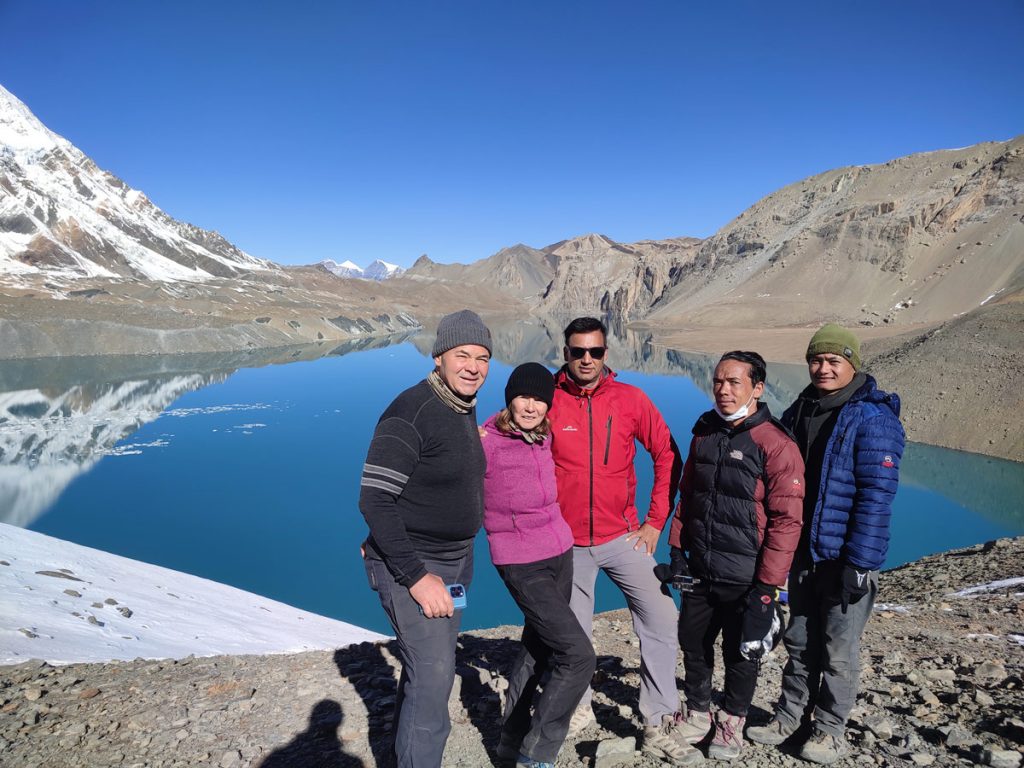
You will also come across some of the main flora and fauna of Annapurna Conservation Area including blue sheep, yaks, and a diverse range of birds as well.
If you prefer an experience full of diversity and glacial landscapes, you can opt for the Gokyo Lakes Trek. However, Tilicho Lake Trek will give you a more secluded experience on a remote trail.
Trekking Difficulty and Physical Demands
The trekking difficulty for both these lake treks depends on the route that you take and the itinerary that you follow as the highest points can vary based on your itinerary.
Sticking to the standard itinerary, the Gokyo Lakes Trek takes you to the highest point of 5,360 meters at Gokyo Ri which is a significantly challenging altitude where altitude sickness can be a concern.
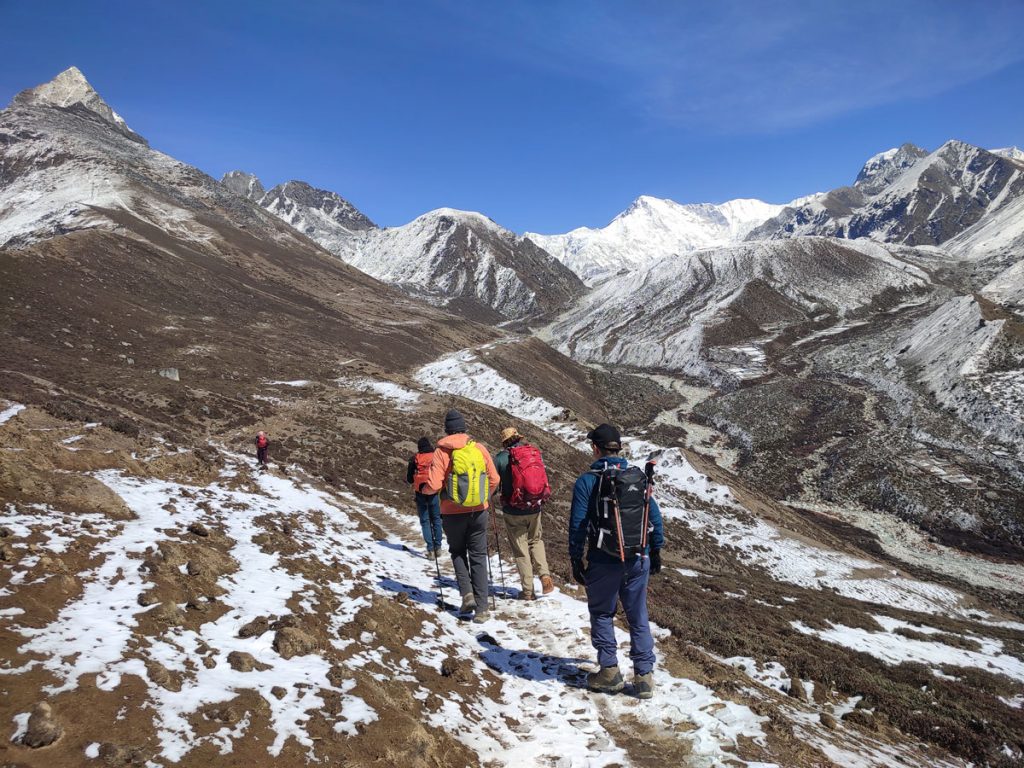
While the Tilicho Lake sits at 4,920 meters, trekkers often complete this trek along with the Annapurna Circuit Trek which includes Thorong La Pass at 5,416 meters, which makes this a high-altitude adventure too.
Even the landscapes for both these treks are challenging as the Gokyo Lakes Trek includes steep climbs on glacial landscapes while the Tilicho Lake Trek includes rocky paths and landslide-prone areas.
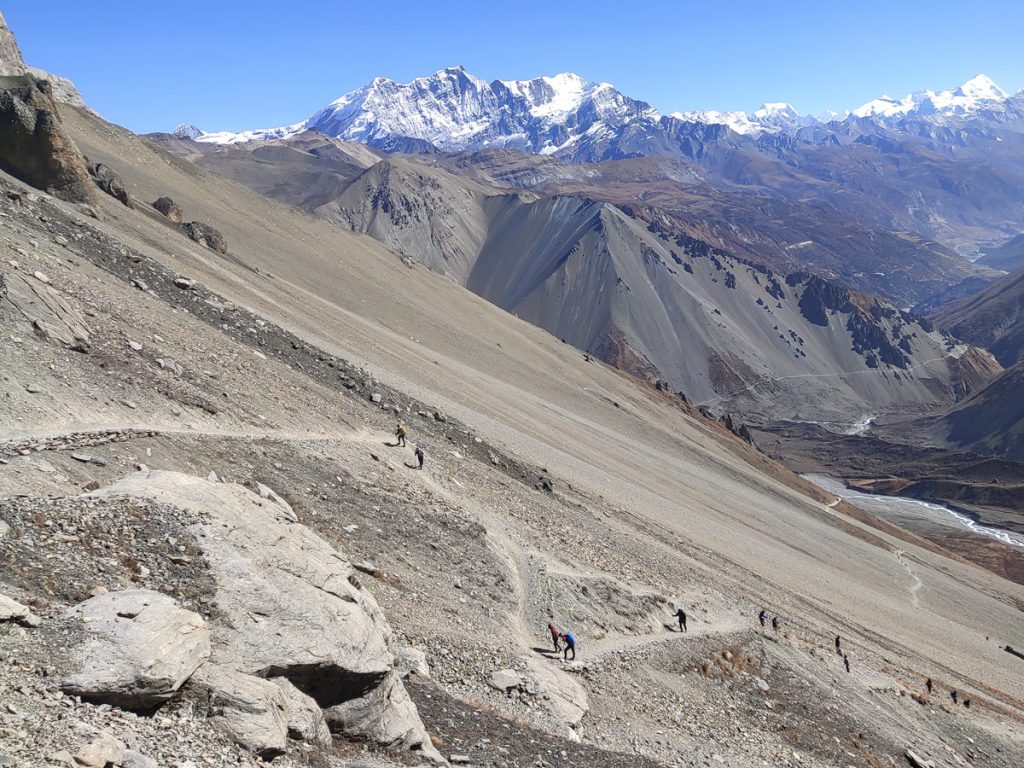
Therefore, both these treks require a great amount of physical fitness and you should prepare well in advance and increase your stamina and endurance. Also make sure to stick to the tips to prevent altitude sickness.
Accessibility and Transportation
When it comes to transportation and accessibility, the Gokyo Lakes Trek and the Tilicho Lake Trek are stark opposites of each other and both offer entirely different experiences.
For the Gokyo Lakes Trek, one needs to take a flight to Lukla Airport, which is a scenic as well as thrilling option. However, the availability highly depends on the season and climatic conditions, and delays and cancellations are more common than you might think.
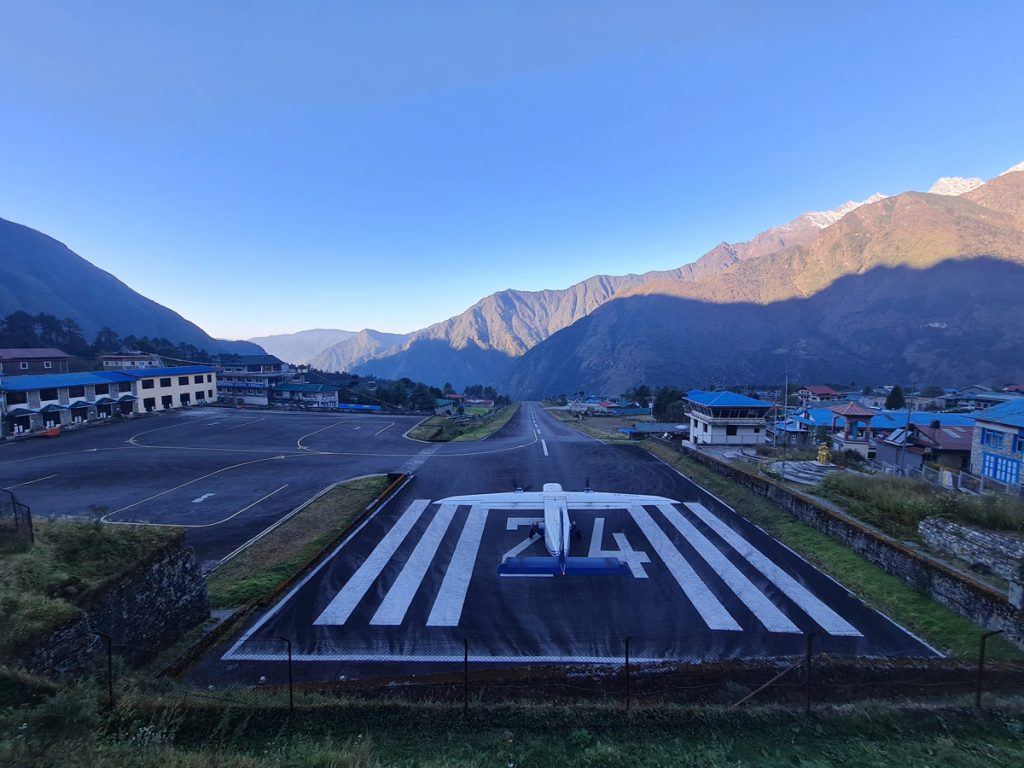
From Lukla, the trek starts, following the standard Everest Base Camp trek route up to Kenjoma, where the trail to Gokyo splits and goes through stops like Phortse Thanga, Machhermo, and Gokyo.
To reach Tilicho Lake, you need to take a bus or a private vehicle. There is a deep road network along the Annapurna Circuit, and private vehicles like jeeps can reach up to Khangsar. However, most trekkers take transportation up to Dharapani and start their trek.
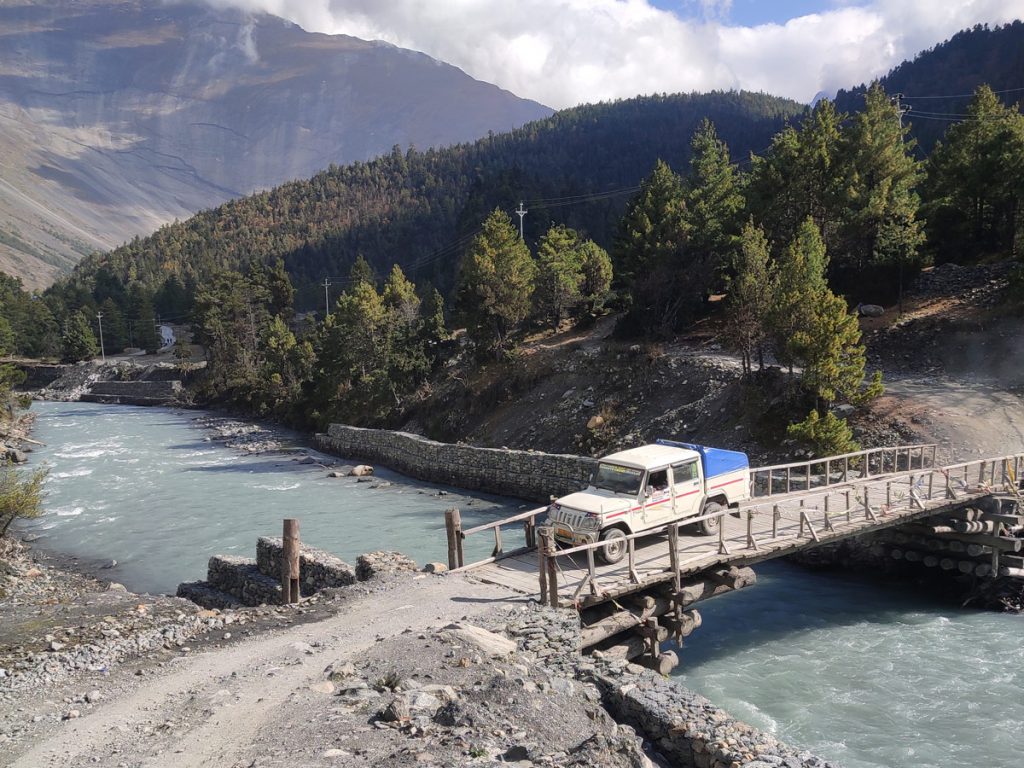
The trail follows the standard Annapurna Circuit route up to Manang, from where the route to Tilicho Lake splits. The road access makes it more flexible and accessible as you don’t need to depend on flights.
Therefore, while Gokyo Lakes Trek has a scenic flight experience, the availability is not always guaranteed while the Tilicho Lake trek offers more reliable ground options making it more convenient.
Culture and Village Life
Falling in the Everest region, a visit to Gokyo Lakes ensures interaction with the Sherpa people who have a rich history as well as a deep spiritual and personal connection with the Himalayas.
Here, you will get a deeper glimpse into the lives of Sherpa people, Buddhism, Tibetan culture, their festivals, rituals, and their lifestyle as these people are known to be warm, welcoming, and hospitable.
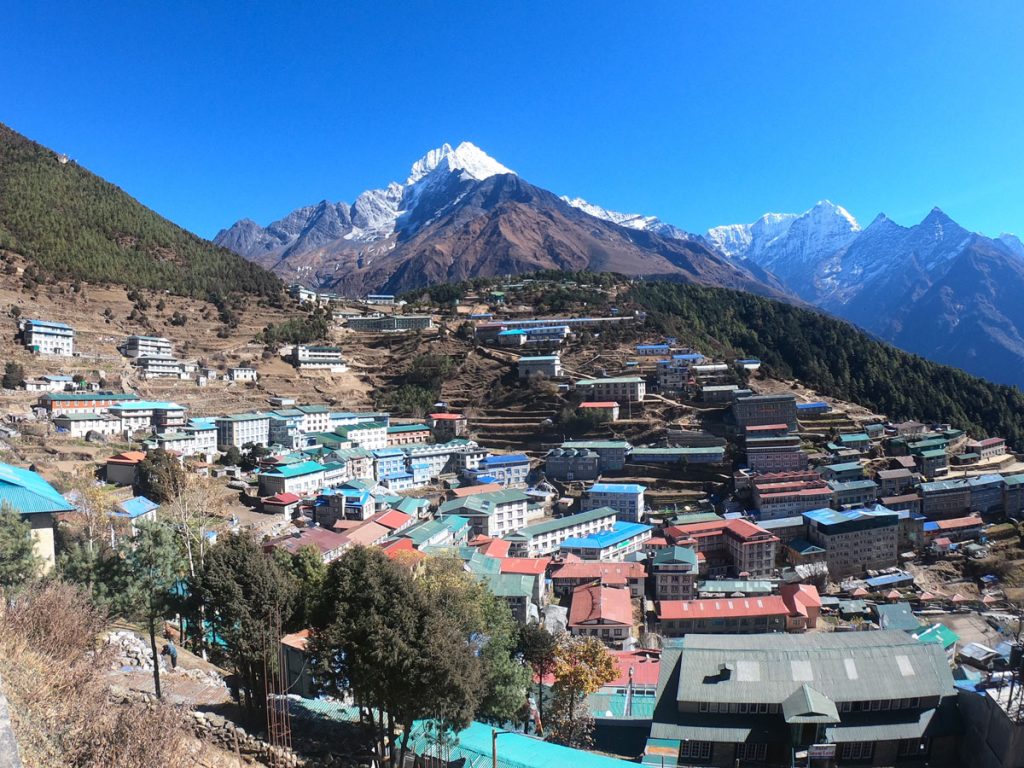
During the Tilicho Lake Trek, you will have a mixed cultural interaction with people from different cultural groups including Gurung, Thakali, Brahmin, Chhetri, and more.
You will see a wide variety of cultures, languages, traditional attires, rituals, celebrations, as well as food while on the Tilicho Lake Trek which makes it a melting pot of cultures.
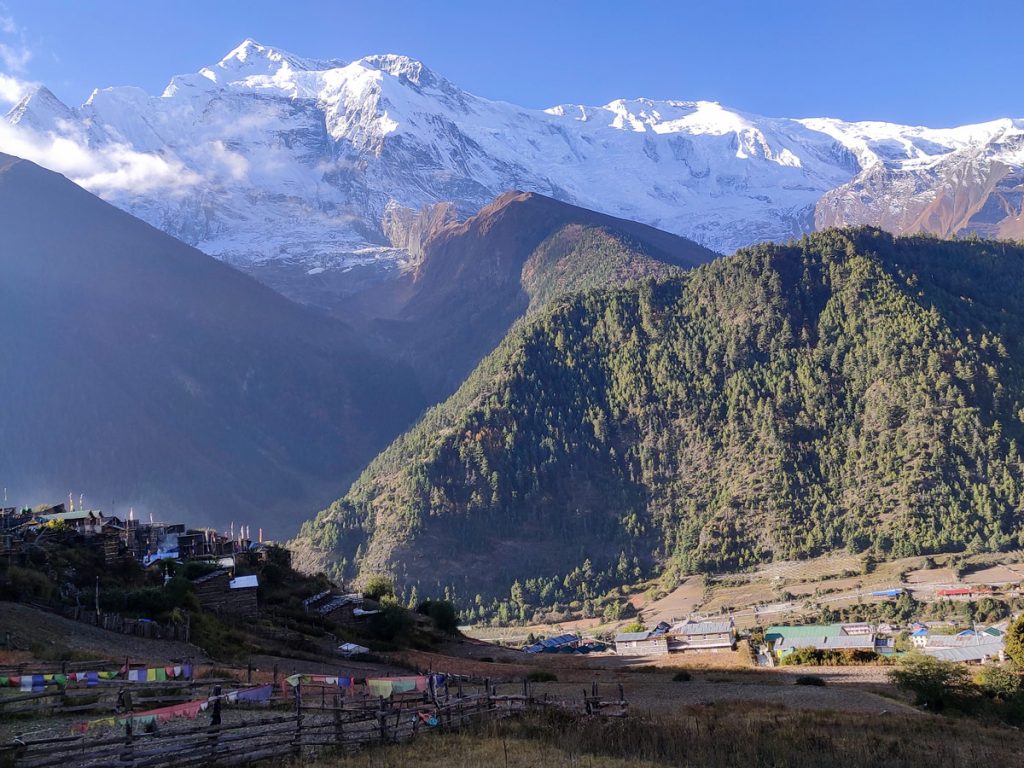
Therefore, if you want a deep insight into the life and culture of Sherpa people, opt for Gokyo Lakes Trek. But if you truly want to explore the unique ethnic diversity of Nepal, Tilicho Lake Trek is the best option to do so.
Preparation
Both the Gokyo Lakes Trek and Tilicho Lake Trek present similar level of challenges. Therefore, you need to be equally prepared for both these treks.
You need to have good cardiovascular strength to bear the low level of oxygen at high altitude. On top of that, you will also be walking for long hours every day with an additional weight on your back.
Make sure to indulge in a comprehensive fitness routine well in advance before the trek. Start at least three months before the trek. Include basic cardiovascular exercises like running, swimming, jumping, climbing stairs, and go on hikes that mimic the conditions like that of the trek.
Also indulge in strength training and focus on your back, shoulders, core, and calf muscles. Prior trekking experience comes in quite handy on these treks as you will know what to expect from the treks and how to deal with the challenges that might come along your way.
Crowds and Popularity
A popular name in the Everest region, the Gokyo Lakes Trek is a well frequented one, especially during the peak seasons, i.e. during the months of Spring (March to May) and autumn (September to November).
While it is a less crowded counterpart of the bustling classic Everest Base Camp Trek, it still sees a lot of footfalls, especially around areas like Lukla and Namche Bazaar.
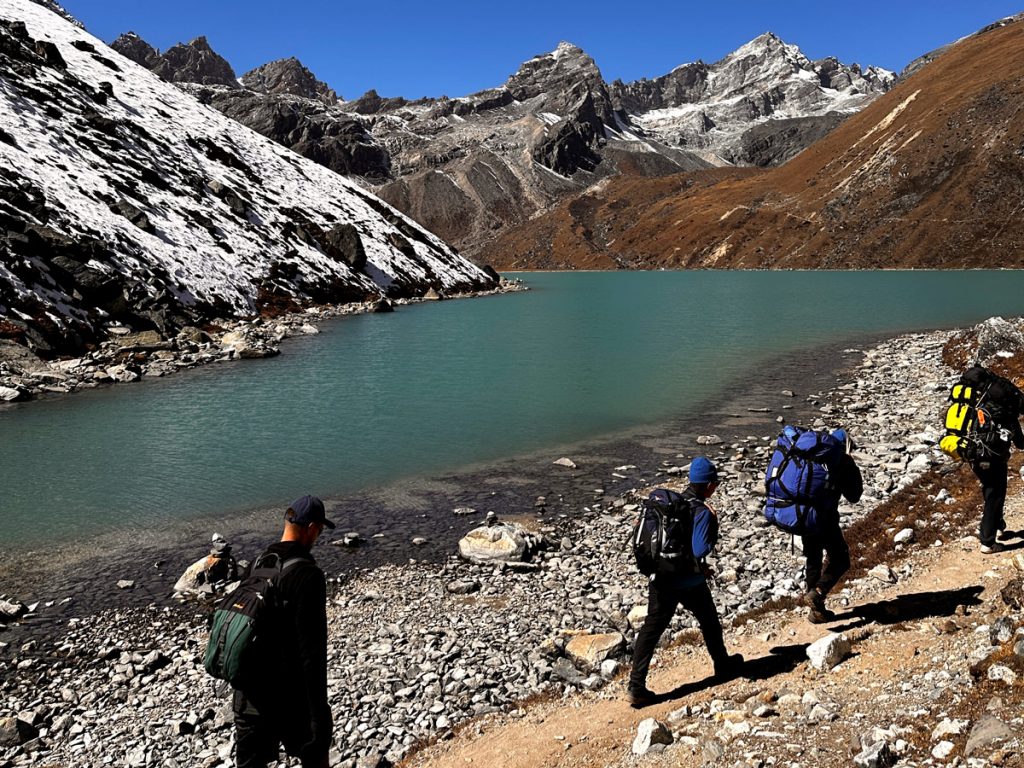
However, as you near the region of the Gokyo Lakes, the crowd starts thinning out given the difficulty of the trek and the high altitude and you will get a rather peaceful experience.
Same is the case with the Tilicho Lake Trek which is often done as a part of the extended Annapurna Circuit Trek which is one of the most famous trekking trails of Nepal.
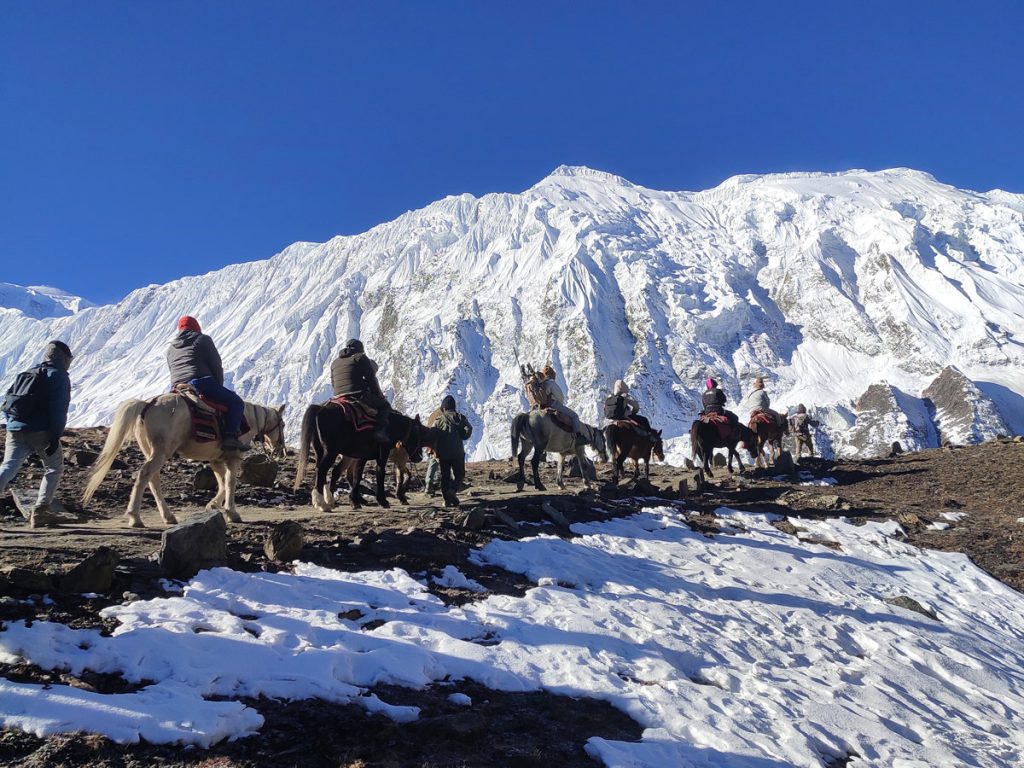
So, you will see lots of crowds in the beginning part of the circuit. However, the detour route from Manang to Tilicho Lake will see most of the crowd disappearing as this trek is an optional route.
Having said that, trekkers with ample time also opt for the Tilicho Lake trek as an acclimatization option while on the Annapurna Circuit Trek. But even then, this trek experiences less crowd as compared to the Gokyo Lakes Trek.
Cost Comparison
As far as the cost is concerned, the Gokyo Lakes Trek comes to be slightly more expensive than the Tilicho Lake Trek. And it is simply because of the transportation method used to go on this trek.
Other amenities including accommodation in teahouses, food, amenities like laundry and hot shower, internet, and others are pretty much similar along both the treks and they are similar in terms of pricing too with slightly higher teahouse costs in the Everest region.
However, Gokyo Lakes Trek includes a flight from Kathmandu to Lukla which makes it more expensive as opposed to the Tilicho Lake Trek which requires a ground transportation instead.
Which is the better lake trek in Nepal?
Both the Gokyo Lakes trek and Tilicho Lake trek are exceptional with each offering their own challenges and rewards. Picking the best lake trek among these is completely subjective and depends on your personal preferences.
For those seeking an iconic experience with immersion into the resilient Sherpa culture, stunning lake views, and diverse landscapes, Gokyo Lakes Trek can be more appealing.
On the other hand, the Tilicho Lake Trek offers the adventure of reaching one of the world’s highest lakes as well as the highest walkable mountain pass in the world, the Thorong La Pass.
You will also have a culturally diverse journey along the Annapurna Circuit with lesser crowd as you near the trek, that too while being lighter on your pockets as well.
Your choice will depend on your trekking experience, cultural interests, and the type of scenery you seek. No matter which treks you choose, you will be left with an iconic experience as well as sense of accomplishment. Happy traveling!
